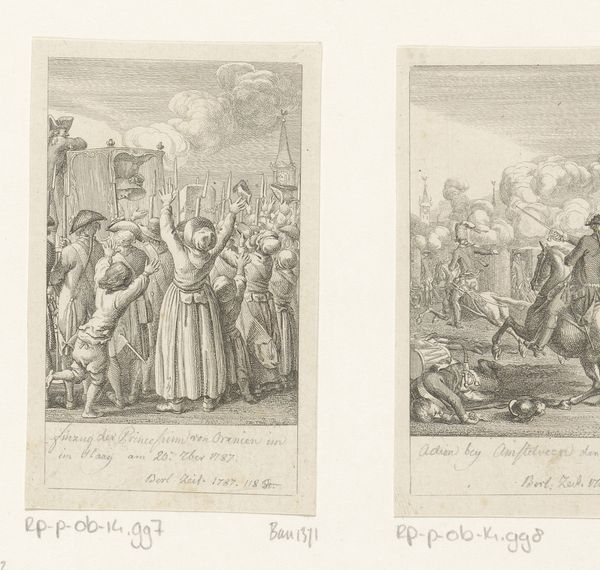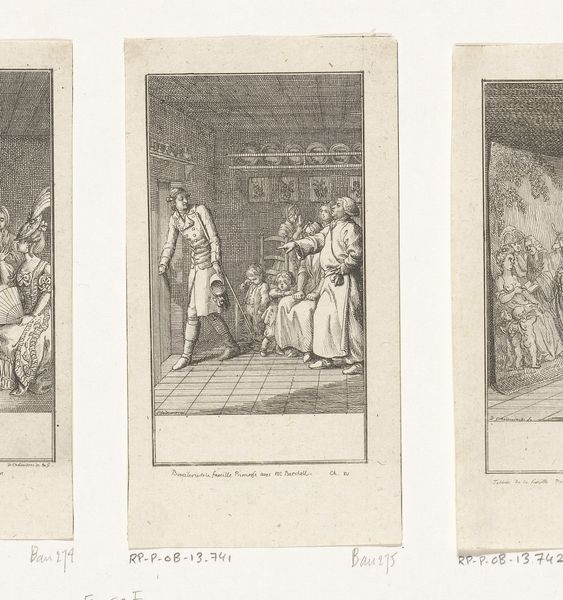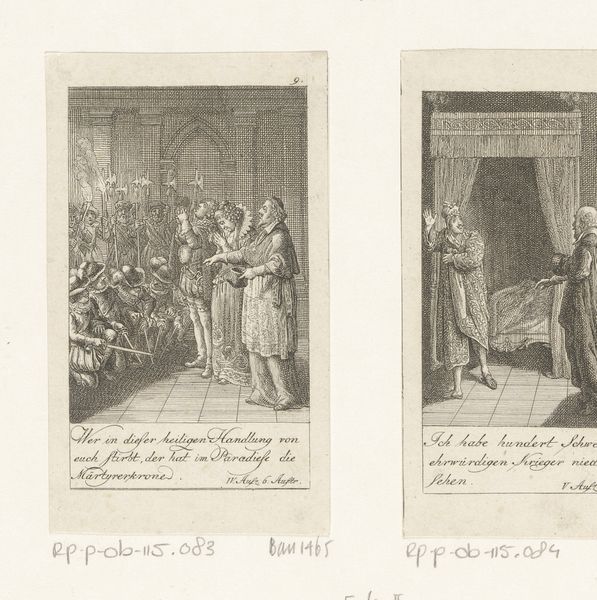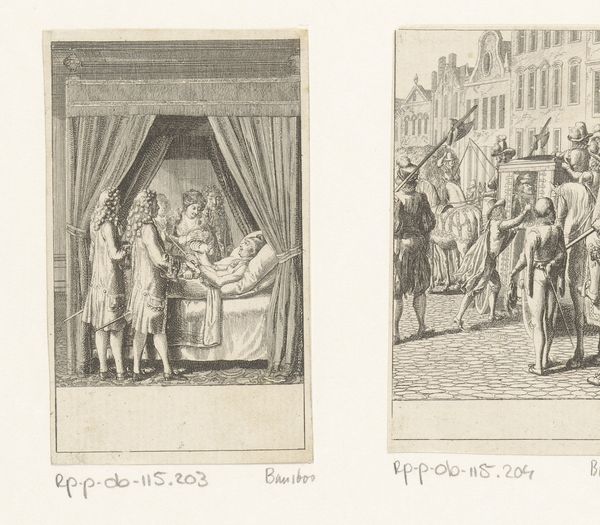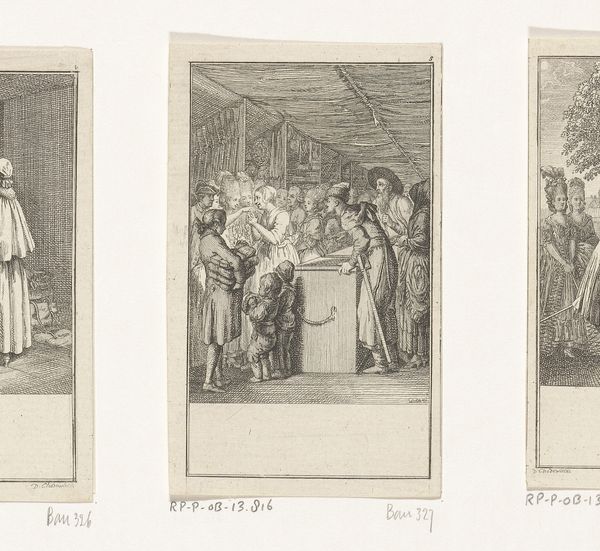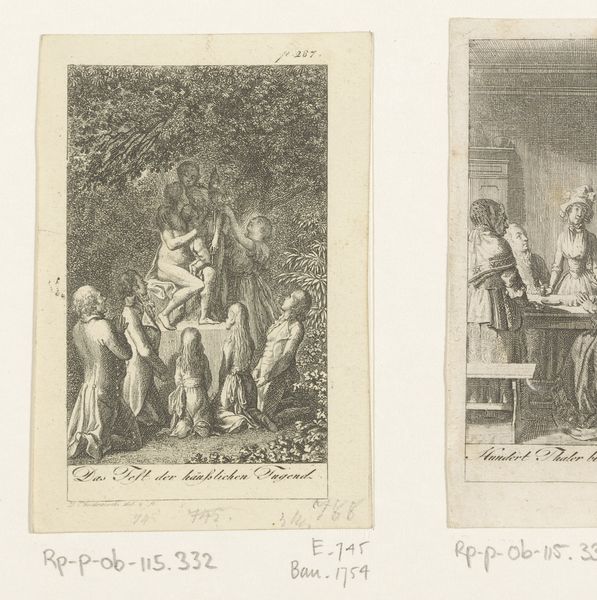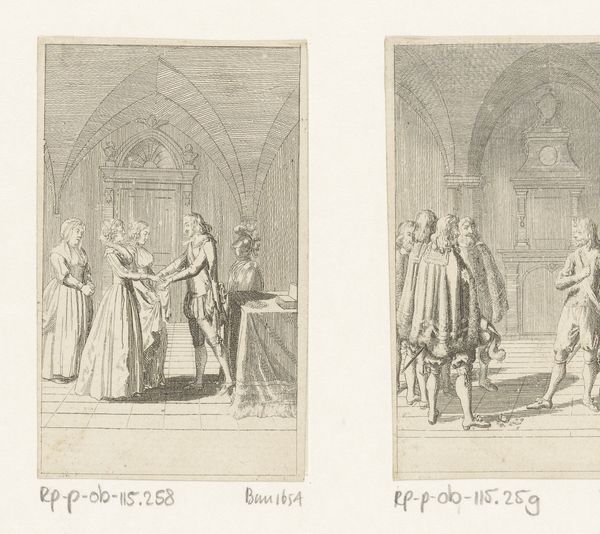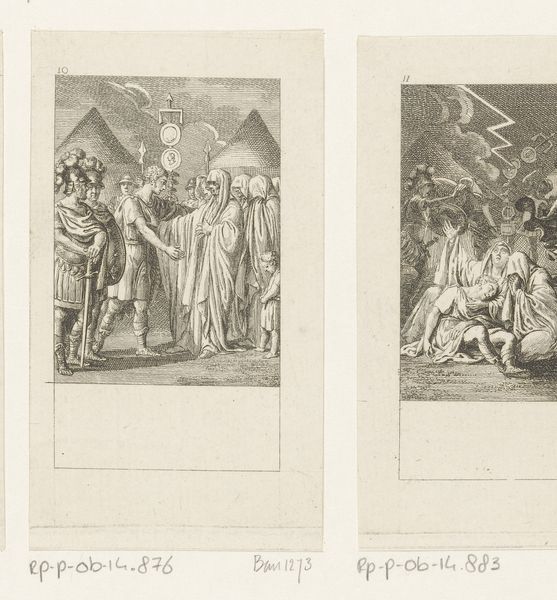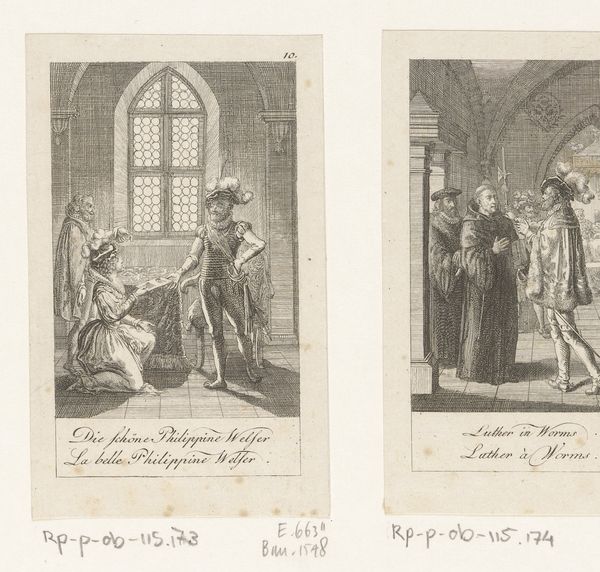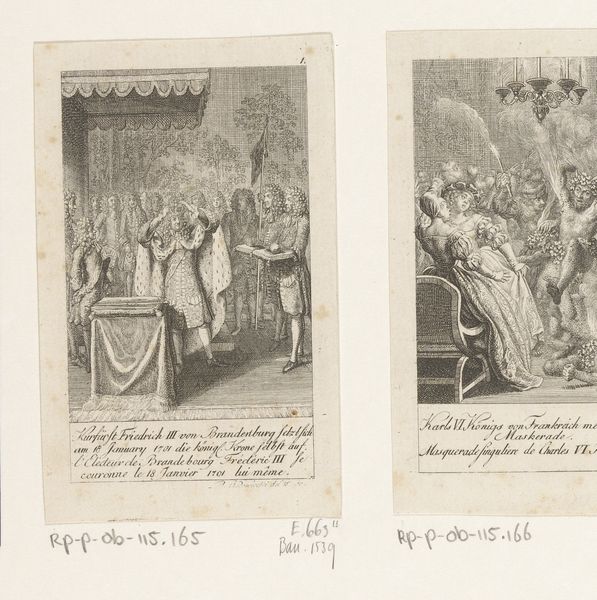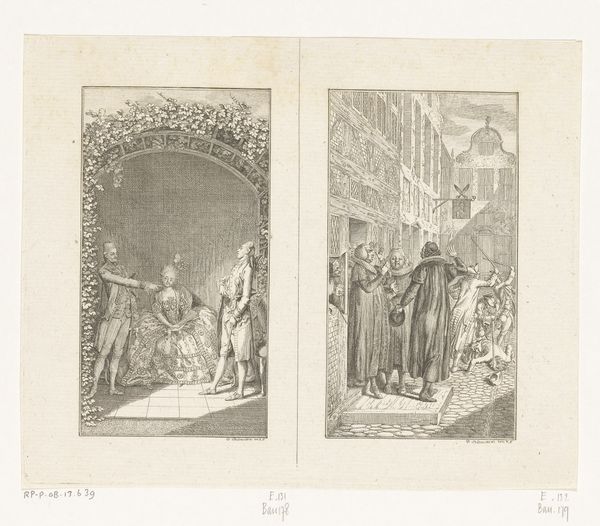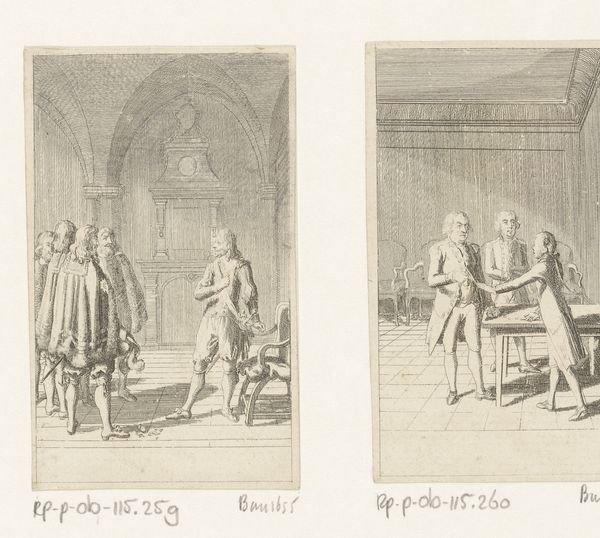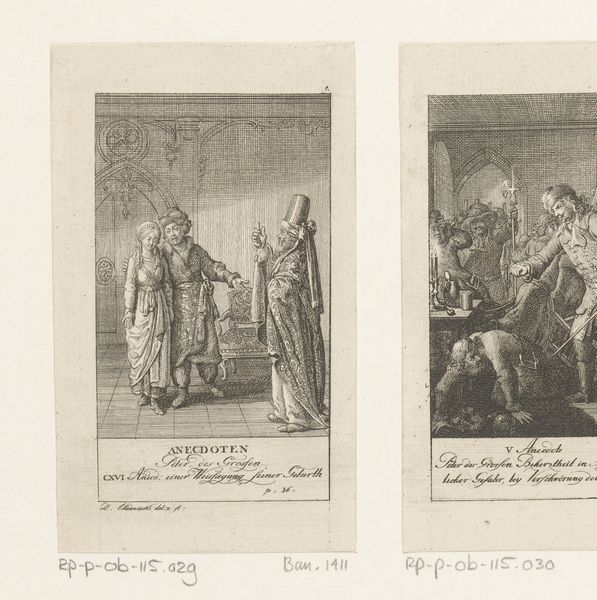
print, engraving
#
narrative-art
# print
#
old engraving style
#
figuration
#
line
#
history-painting
#
engraving
Dimensions: height 90 mm, width 54 mm
Copyright: Rijks Museum: Open Domain
Curator: Ah, "Feestmaal van Trajanus" or "The Feast of Trajan," an engraving dating back to 1793, crafted by Daniel Nikolaus Chodowiecki. What strikes you first about this print? Editor: It's incredibly detailed, yet feels almost detached, like looking at a staged scene rather than witnessing a real event. There's a crisp formality that speaks volumes. Curator: Agreed. Chodowiecki's line work is remarkable. Look at the texture he creates with just simple engraving techniques. Each character seems meticulously rendered, their clothes and faces capturing the historical fashion of the time. How might that level of detail affect its reception, particularly at the time? Editor: It certainly suggests a deliberate effort to legitimize historical narratives. This level of production—the labor invested in those tiny, precise lines—would position the artwork within a discourse of skill, value, and authority. Curator: Exactly. Consider also the socio-political backdrop. We're on the cusp of major societal upheaval in Europe, with emerging republics challenging long-standing aristocratic privileges. This engraving, with its detailed portrayal of power dynamics and social hierarchies, serves to promote the notion of a great Roman past, a kind of golden age, doesn't it? The narrative-art quality seems to be in sharp contrast with the history that will unfold soon. Editor: Yes, and I find the contrast within the print fascinating: an interior with luxurious eating and celebration adjacent to a scene that resembles prisoners being brought in or traded. The choice of printing as a medium would be critical too, to guarantee wider availability of that message at a lower cost. Curator: Certainly. Its accessibility means the image, and therefore the narratives embedded within it, could be disseminated more broadly than, say, a single grand history painting exhibited to a select few. Editor: So it’s about asserting the material value, of historical grandeur but making the statement readily consumable... something to be mass-produced and broadly received. A fascinating commentary for our contemporary lens. Curator: Indeed, it allows us to reflect on how historical narratives are carefully crafted and presented, always serving a particular social purpose, be it in 1793 or today.
Comments
No comments
Be the first to comment and join the conversation on the ultimate creative platform.
